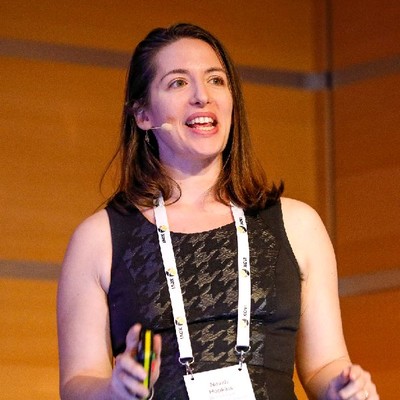In the ever-evolving world of paid search advertising, understanding the intricacies of platforms like Google and Microsoft is critical for campaign success. While these platforms are similar in many aspects, there are a range of distinct features that can significantly impact your advertising outcomes.
This article tells you what those differences are and how you can take advantage of them for maximum account performance.
Campaign Level Settings
At the campaign level, both Google and Microsoft provide a suite of settings designed to tailor your advertising efforts to your specific needs. Both allow for the following campaign-level settings:
- Budget
- Location
- Ad schedule
- Bidding strategies
- Placements outside the “core” channel (search partners, display expansion, etc.)
Google allows advertisers to set a daily budget of $20 for a local bakery looking to target customers within a 30-mile radius. This bakery can also schedule ads to run only during business hours, ensuring the ads are seen by potential customers when the bakery is open. The Google advertiser could include image assets to enhance their search with display select campaigns and would need to make that choice at the campaign level.
Microsoft
Conversely, Microsoft takes it a step further by allowing ad scheduling and location targeting at the ad group level. This means our local bakery could create one ad group targeting morning commuters with breakfast offerings from 6-9 AM and another targeting the lunch crowd from 11 AM-2 PM, each within specific areas known for high commuter traffic. While Google advertisers could do this, they’d need a campaign per schedule. Additionally, they’d be able to pick and choose which ad groups get added to search partners including Duck Duck Go and Baidu.
Keywords and Negatives
The approach to keywords in Google and Microsoft can make or break a campaign. Targeting keywords helps advertisers reach prospective customers, while negative keywords block wasteful/irrelevant traffic.
Three distinct targeting match types (broad, phrase, and exact), and three distinct negative match types exist. Targeting keywords allow for close variants, while negative keywords do not. As a reminder, broad match negative means the words as they are spelled can be anywhere in the query to block traffic.
Microsoft
Three distinct targeting keywords, but only phrase and exact match negatives exist. I personally tend to just include phrase match negatives for single words I want to exclude so I can use the same lists for both networks.
Bidding
The bidding strategies offered by Google and Microsoft are critical for managing how your budget is spent and how your ads are positioned.
Smart bidding can be turned on at any conversion threshold (though it’s not recommended under 30-50 conversions in a 30-day period), devices can be completely excluded, and portfolio bidding with bid caps. Google allows for impression share and max clicks bidding to help advertisers ramp up while they wait for conversions.
Microsoft
For the most part, things are the same in Microsoft. However, the minimum bid is $0.05, Smart Bidding is still “Target ___”, and no turning on Smart Bidding till you have at least 15 conversions. Note that Microsoft still supports Smart Shopping (though portfolio bids are not compatible with it).
Audience Targeting
Effective audience targeting is essential for reaching potential customers who are most likely to convert.
First-party lists must have at least 1000 people and at least one new person added every week. There should be a minimum spend of $50K and at least 90 days of data to use. Additionally, Google serves ads in the time zone of the account. And YouTube audiences (who interacted with your video/channel) can be leveraged for targeting or observation.
Microsoft
While Microsoft requires 1000 people in the first-party lists, it does not require the same spend. Audiences can include LinkedIn data (company/job title). Note that Microsoft serves ads in the time zone of the user.
Performance Max Campaigns
Performance Max campaigns offer a holistic approach to PPC, blending various ad formats and platforms.
The originator of the campaign type. This campaign type covers text, image, and video ads across search, shopping, display, YouTube, discover, Gmail, and local ads (not to be confused with local service ads). They can have up to 100 asset groups and 25 search themes per asset group.
Microsoft
Almost every mechanic is the same save for requiring a video component. This is because the Audience Network (which includes Duck Duck Go and Baidu) is image and text-heavy. Additionally (as of this post’s publication date), Microsoft does not have search themes.
Read now: 7 Powerful Microsoft Ads Optimization Tips to Get More Conversions
Like Two Sides of the Same Coin.
In sum, while Google and Microsoft share foundational similarities in their PPC offerings, the nuanced differences between them can greatly influence the effectiveness of your advertising efforts. By delving into specific settings and examples, as we’ve done here, you can gain a deeper understanding of how to navigate and take advantage of these nuances, crafting campaigns that are not only more targeted and relevant but also more cost-efficient and successful.
At Optmyzr, our goal is to empower advertisers to fully harness the capabilities of both platforms, ensuring that your PPC campaigns are primed for success in the dynamic digital advertising landscape. By embracing the unique features and opportunities presented by Google and Microsoft, you can achieve unparalleled results, driving growth and maximizing ROI in your digital marketing endeavors.
Not advertising on Microsoft yet? Take advantage of the auto-import functionality and account creation within Optmyzr.
Sign up for a 14-day free trial today.
Thousands of advertisers — from small agencies to big brands — worldwide use Optmyzr to manage over $5 billion in ad spend every year. Plus, if you want to know how Optmyzr’s various features help you in detail, talk to one of our experts today for a consultation call.











